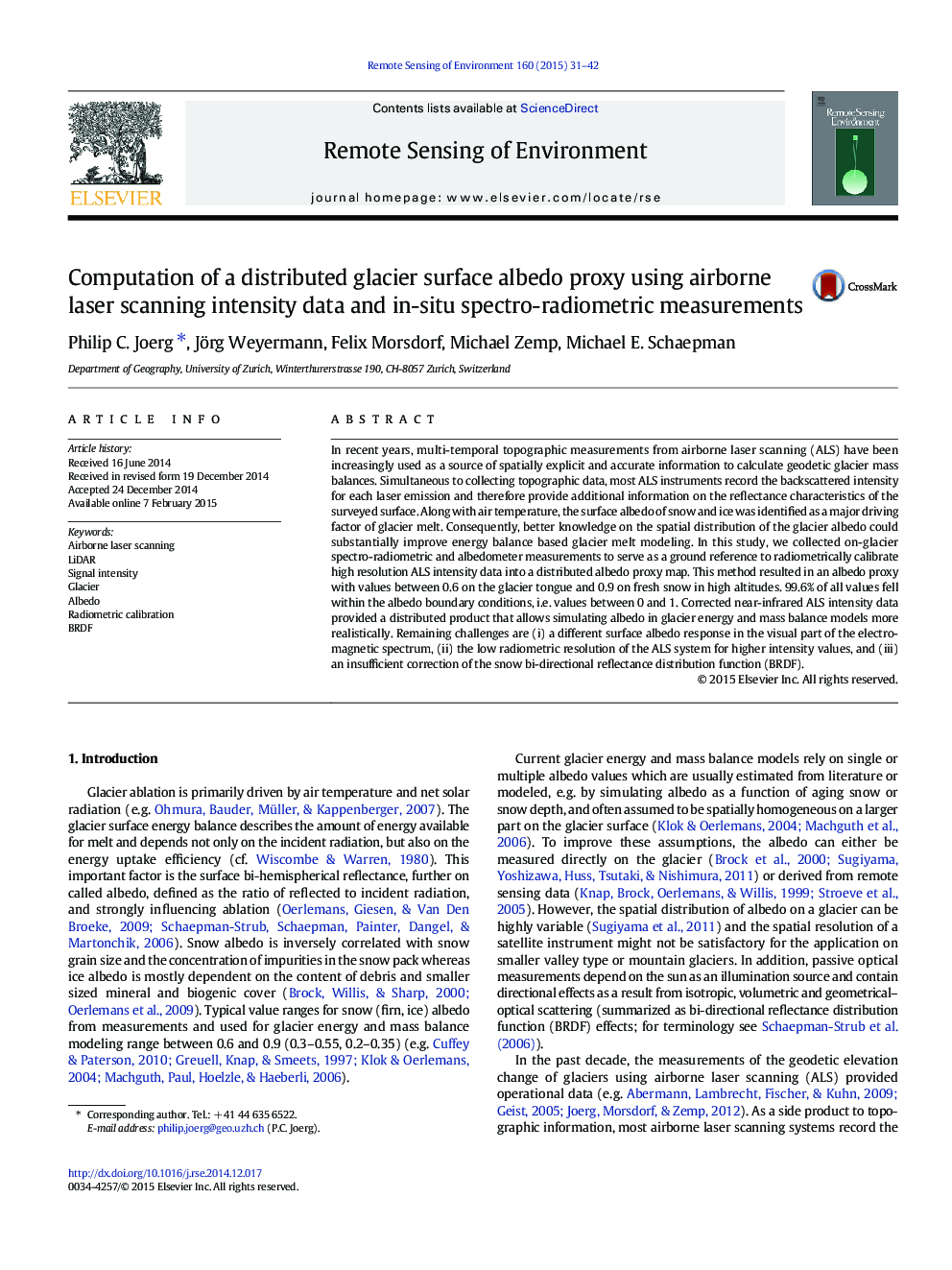| Article ID | Journal | Published Year | Pages | File Type |
|---|---|---|---|---|
| 6345954 | Remote Sensing of Environment | 2015 | 12 Pages |
Abstract
In recent years, multi-temporal topographic measurements from airborne laser scanning (ALS) have been increasingly used as a source of spatially explicit and accurate information to calculate geodetic glacier mass balances. Simultaneous to collecting topographic data, most ALS instruments record the backscattered intensity for each laser emission and therefore provide additional information on the reflectance characteristics of the surveyed surface. Along with air temperature, the surface albedo of snow and ice was identified as a major driving factor of glacier melt. Consequently, better knowledge on the spatial distribution of the glacier albedo could substantially improve energy balance based glacier melt modeling. In this study, we collected on-glacier spectro-radiometric and albedometer measurements to serve as a ground reference to radiometrically calibrate high resolution ALS intensity data into a distributed albedo proxy map. This method resulted in an albedo proxy with values between 0.6 on the glacier tongue and 0.9 on fresh snow in high altitudes. 99.6% of all values fell within the albedo boundary conditions, i.e. values between 0 and 1. Corrected near-infrared ALS intensity data provided a distributed product that allows simulating albedo in glacier energy and mass balance models more realistically. Remaining challenges are (i) a different surface albedo response in the visual part of the electro-magnetic spectrum, (ii) the low radiometric resolution of the ALS system for higher intensity values, and (iii) an insufficient correction of the snow bi-directional reflectance distribution function (BRDF).
Related Topics
Physical Sciences and Engineering
Earth and Planetary Sciences
Computers in Earth Sciences
Authors
Philip C. Joerg, Jörg Weyermann, Felix Morsdorf, Michael Zemp, Michael E. Schaepman,
